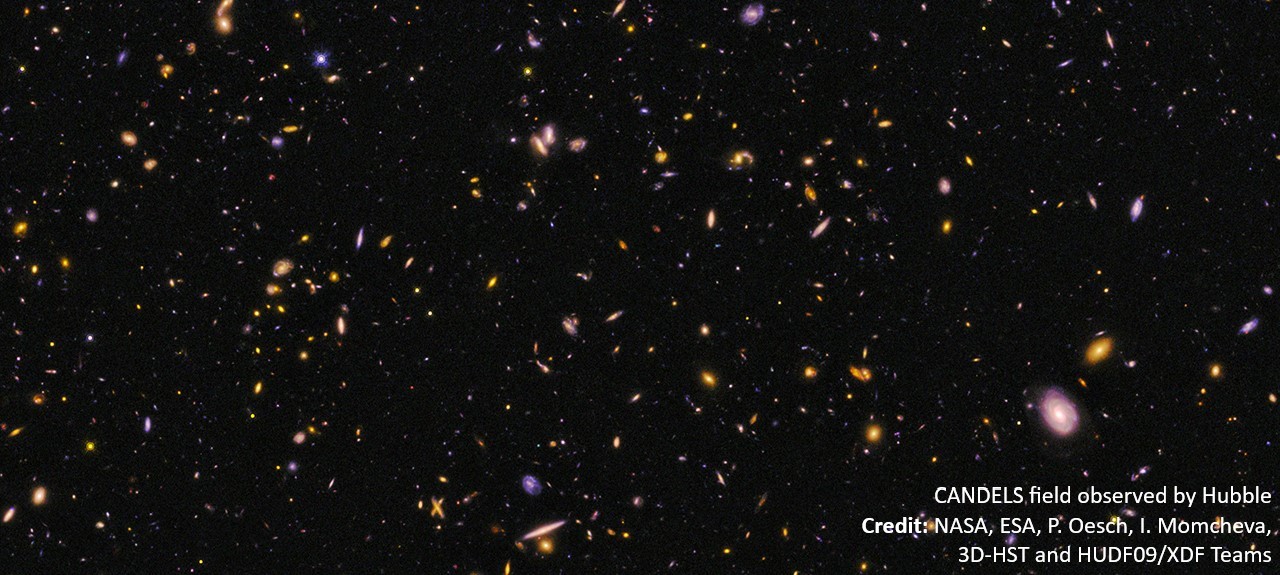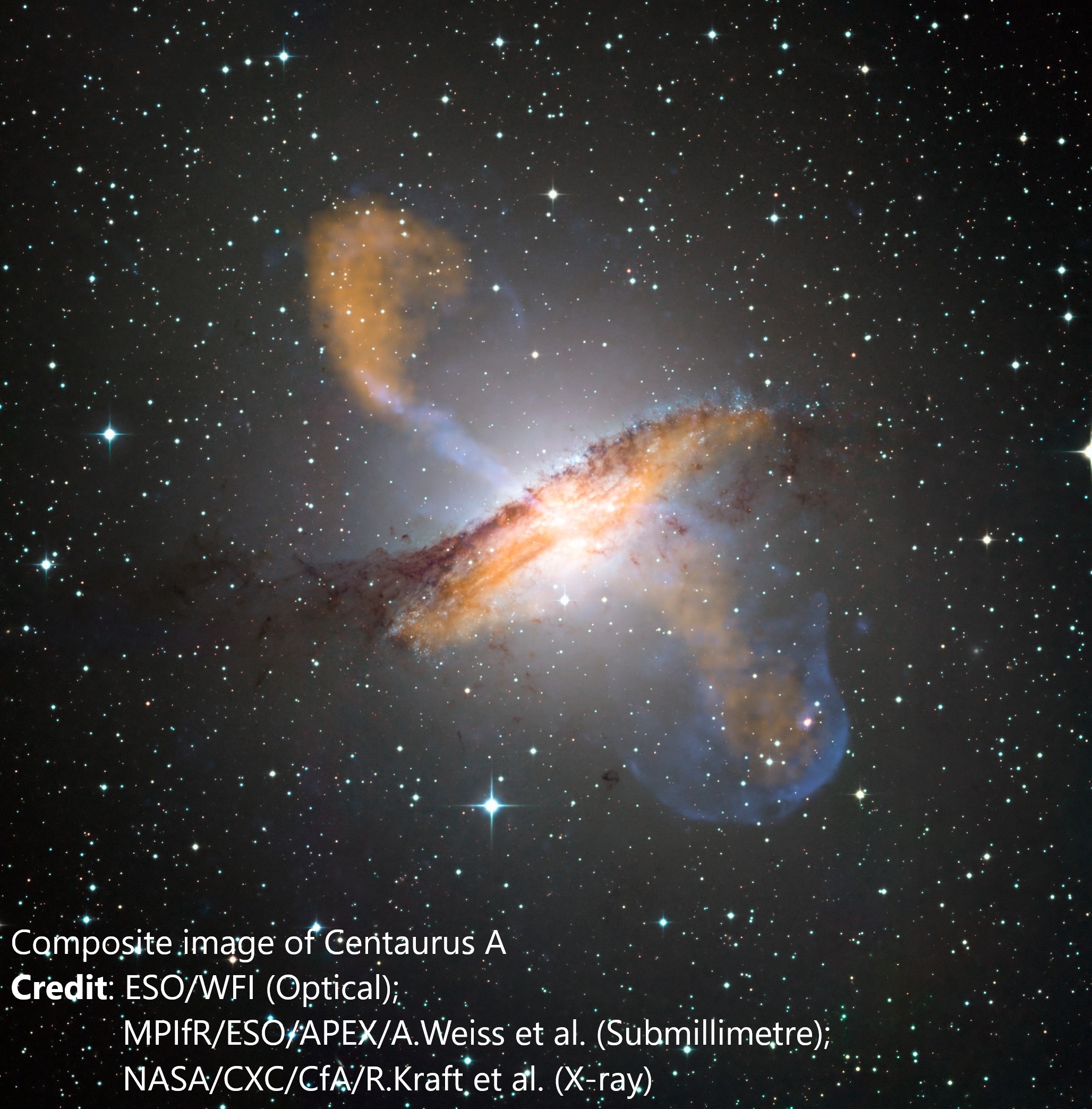The KICC extragalactic research revolves around understanding the physical mechanisms responsible for galaxy formation and evolution. In particular, we focus on galaxy chemical enrichment, dynamics and quenching as well as the influence of supermassive black holes on these processes across cosmic epochs.
Different research groups within the Institute use state-of-the-art cosmological simulations and multivalength observations on prime facilities to create a comprehensive picture of the evolution of structure in the Universe.
The current KICC research can be divided into the following focus areas:
- the role of gas flows (both inflows and outflows) in regulating star formation in galaxies
- the role of galaxy "environment" (i.e. whether galaxies living in overdense regions evolve differently relative to isolated galaxies or not)
- evolution of chemical elements in galaxies as a tracer of the star formation history
- quenching of star formation across cosmic time
- dust content and dust properties in galaxies
- the interplay between accretion onto supermassive black holes and the evolution of their galactic hosts (RESEARCH HIGHLIGHT)
- properties of the first proto-galaxies in the primordial Universe (RESEARCH HIGHLIGHT)
- dwarf galaxy formation with cosmic rays, radiation and magnetic fields (RESEARCH HIGHLIGHT)
- AGN in dwarf galaxies (RESEARCH HIGHLIGHT)
- gaseous haloes and the Circumgalactic Medium (RESEARCH HIGHLIGHT)
- the origin and role of magnetism in galaxies (RESEARCH HIGHLIGHT)
- AGN jets simulations (RESEARCH HIGHLIGHT)
- multiphase gas in the centre of galaxy clusters (RESEARCH HIGHLIGHT)
Observations within these areas focus on large multi-wavelength observing programmes on major observing facilities such as the ESO-VLT (in particular, its SINFONI, MUSE, Xshooter and KMOS instruments and its Large Programmes, e.g. KLEVER), ALMA and NOEMA. We are also actively involved in large scale imaging and spectroscopic surveys (e.g. DES, VISTA) and multi-IFU resolved spectroscopic studies like the MaNGA survey. Looking into the future, we are part of extensive programmes planned on upcoming facilities, in particular, JWST, MOONS@VLT, DESI, LSST, 4MOST and HIRES@ELT.
All of the current and planne observational programmes probe the physical properties of black holes, galaxies and the intergalactic medium (IGM) from which they form with unprecedented detail. For a meaningful comparison of this flood of high-quality data with theoretical models, accurate hydrodynamical simulations of cosmic structure formation, incorporating realistic baryonic physics, will be essential to interpret the data and gain deeper insight into the physics of galaxy formation. To achieve this goal, here at KICC we are performing state-of-the-art galaxy formation simulations on HPC facilities in the UK and abroad with some of the most sophisticated galaxy formation physics modules currently available.
List of current Kavli researchers working in the area of Formation and Evolution of Galaxies and Supermassive Black Holes:
- Martin Haehnelt
- Richard McMahon
- Roberto Maiolino
- Debora Sijacki
- Manda Banerji
- Sergio Martin-Alvarez
- Ricarda Beckmann
- Asa Bluck
- Mirko Curti
- Emma Curtis-Lake
- Gareth Jones
- Nicolas Laporte
- Hannah Übler
- Sophie Koudmani
- Rosie Talbot
- James Trussler
- Sim Brownson
- Jake Bennett
- Adam Marshall
- Joanna Piotrowska
- Lester Sandles
- Joris Witstok
- Connor Hayden-Pawson
- Dily Ong
- William Baker
- Tobias Looser
Researchers previously based in this Kavli group include:
Ricardo Amorin, Francesco Belfiore, Pawel Biernacki, Matt Bothwell, Martin Bourne, Stefano Carniani, Ricardo Chavez, Xi Chen, Alice Concas, Tiago Costa, Mike Curtis, Colin DeGraf, Davide Fiacconi, Andrin Flütsch, Robert Gallagher, Nick Henden, Shaoran Hu, Simon Karl, Harley Katz, Taysun Kimm, Girish Kulkarni, Nimisha Kumari, Benjamin Moster, Aneesh Naik, Estelle Pons, Ewald Puchwein, Sijing Shen, Renske Smit and Matthew Smith.




